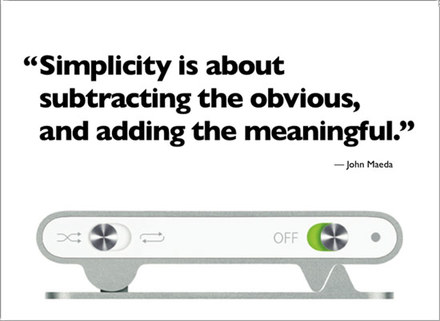
Courtesy of Putting People First
Shrink that proposal. Shorten that memo. Simplify that presentation.
Do it in four pages (or less). Better yet if you can tell me what decision you need in 30 seconds flat. Starting from now…
Ever been in a situation where your boss tells you to cut, cut, cut? You’re not alone. In an age of multi-tasking, triple hatting, short attention spans and overflowing inboxes, the management mantra of choice is one of reduction.
Now before you go ahead thinking that a creating a short report is easier than a long one, consider the following:
1) You need to assemble disparate sources of information from emails, websites, papers, corridor conversations, books, and other sources of information into a single, condensed piece.
2) You need to provide the right context for your paper so that your boss or your board, who are usually less in touch with what’s happening on the ground, can be brought up to speed.
3) You need to develop a compelling and coherent argument to support your case, often with the right facts, figures and competitive information.
4) You need to unpack, deconstruct and reconstruct the case in a digestible format, even when the subject matter is complicated and obtuse.
5) You need to prove, beyond a shadow of doubt, that what you’re proposing as the solution is the best way forward.
6) You need to justify the resources needed for this exercise, and why it beats the crap out of all other alternatives.
And all this under 10 minutes (or less), with a 4 page paper and a 10 slide presentation. If you’re lucky.

Courtesy of Presentation Zen
Is there a way to cook this dish such that it can be served quickly and successfully?
Here’s what I’d do:
1) Visualise yourself as your boss/customer/investor and imagine what he or she would be looking out for. Put on his/her working shoes for a day (or 10).
2) Read and go through the diverse sources of information quickly as a backgrounder. As you do so, think about what your core argument is going to be.
3) Put together a skeletal framework. Think about what facts and figures are useful to present, which should be discarded, and what point you would like to make.
4) As you do so, remember to be merciless and slash all the nice-to-haves that are not critical to your central argument. Don’t be emotional about your beautiful database of competitive indicators, customer profiles or 20 year trend analyses.
5) Consider using tables, graphs and charts to present your point. A picture paints a thousand words. When doing so, however, don’t go overboard with unloading tonnes of data that have little real bearing on your final outcomes.
6) Simplify your sentences and keep them short. Stick to one major point per paragraph. Use action-oriented phrases and words rather than academese (unless of course, you’re presenting to a panel of professors).
7) Keep closely to your narrative and your script. The best corporate presentations are like short stories where one can keep an audience of bigwigs spellbound for a few minutes before unleashing the (hopefully) climactic conclusion.
Of course, the devil is in the details as they say. It often takes years of experience and some hard knocks to understand what kernels of wisdom should go into that nutshell.

Courtesy of Dream to Stay Awake

Conclusions first, supporting points later. Everyone should go read Barbara Minto’s The Pyramid Principle before they write another paper or do another PowerPoint.